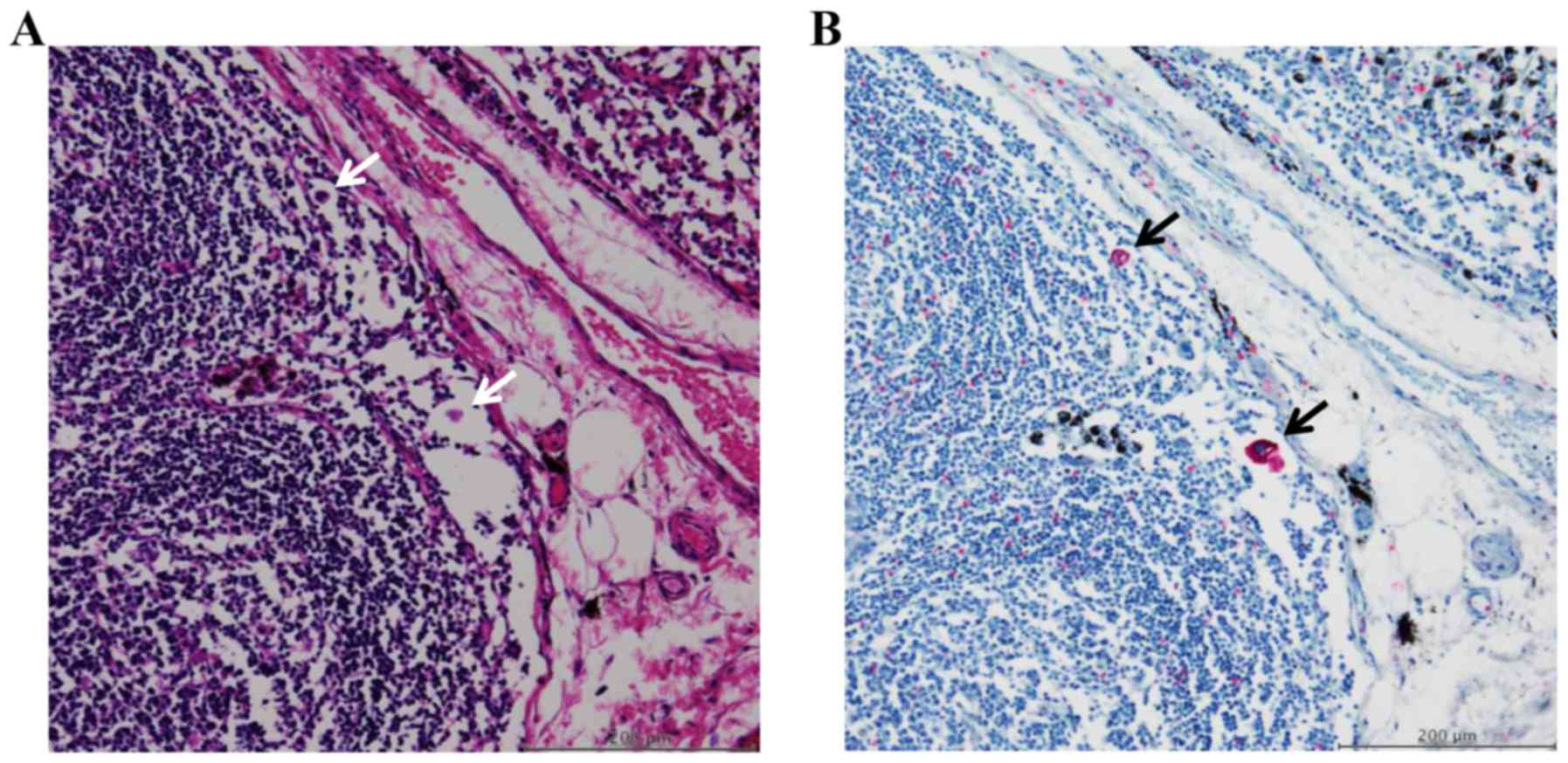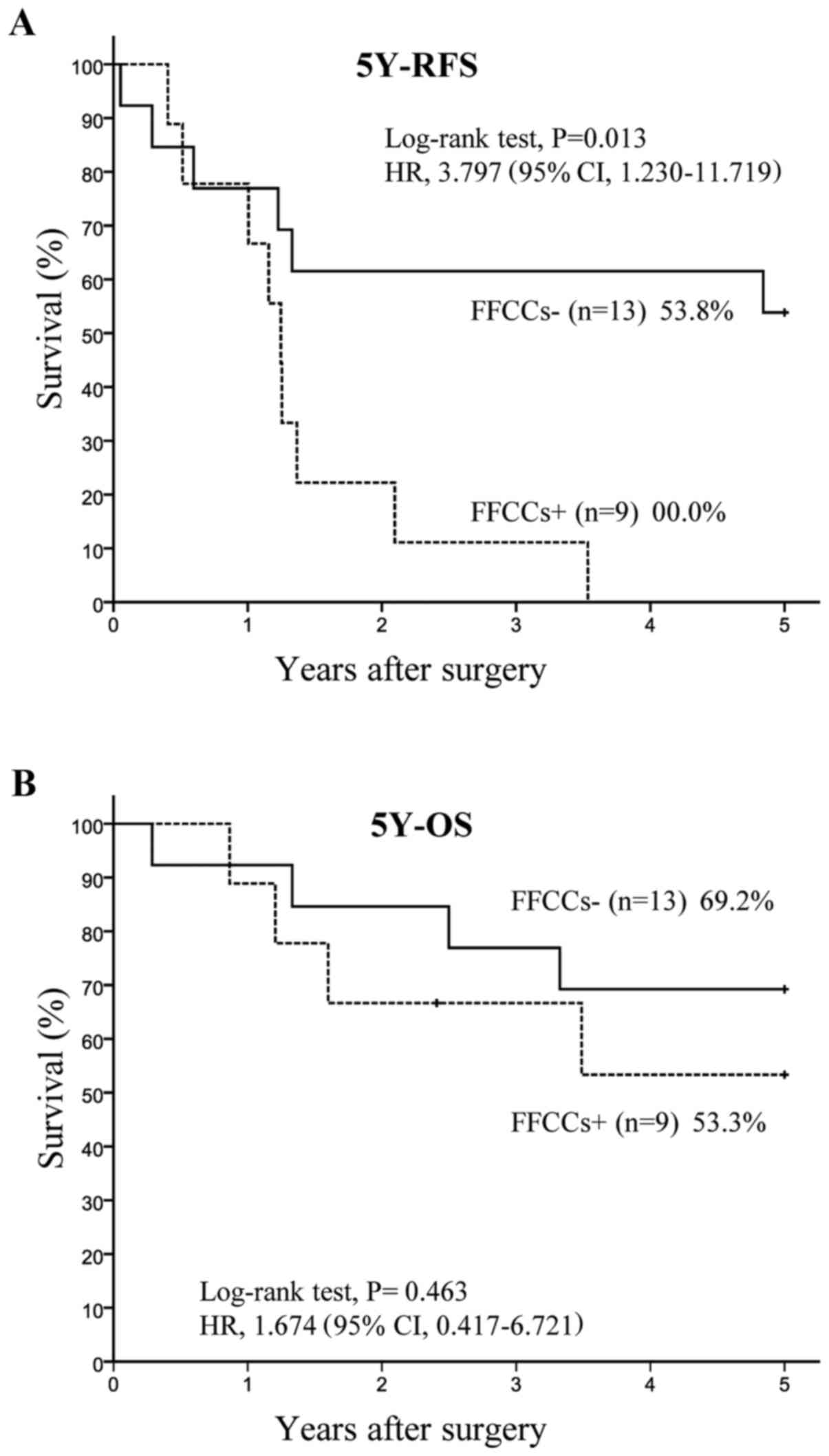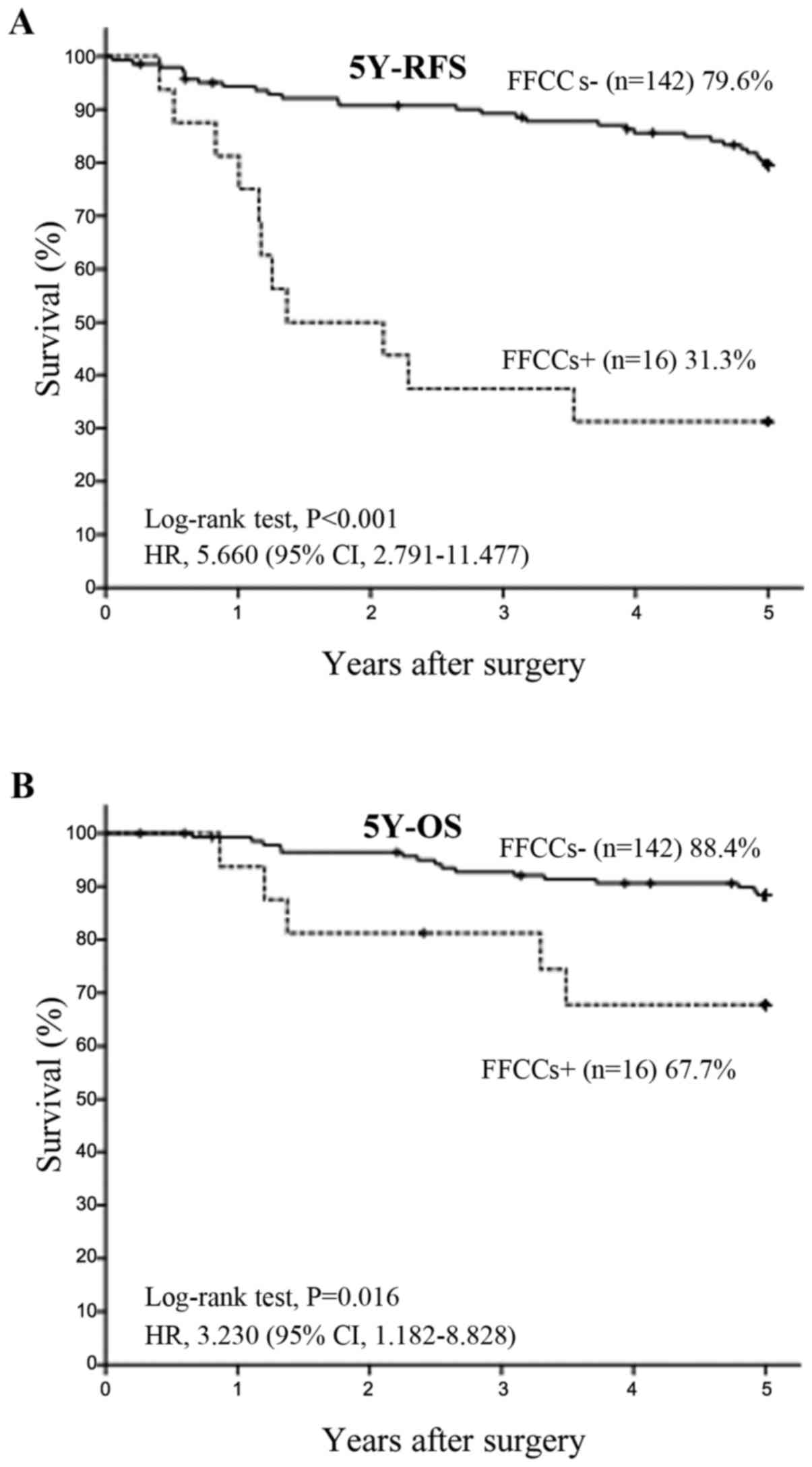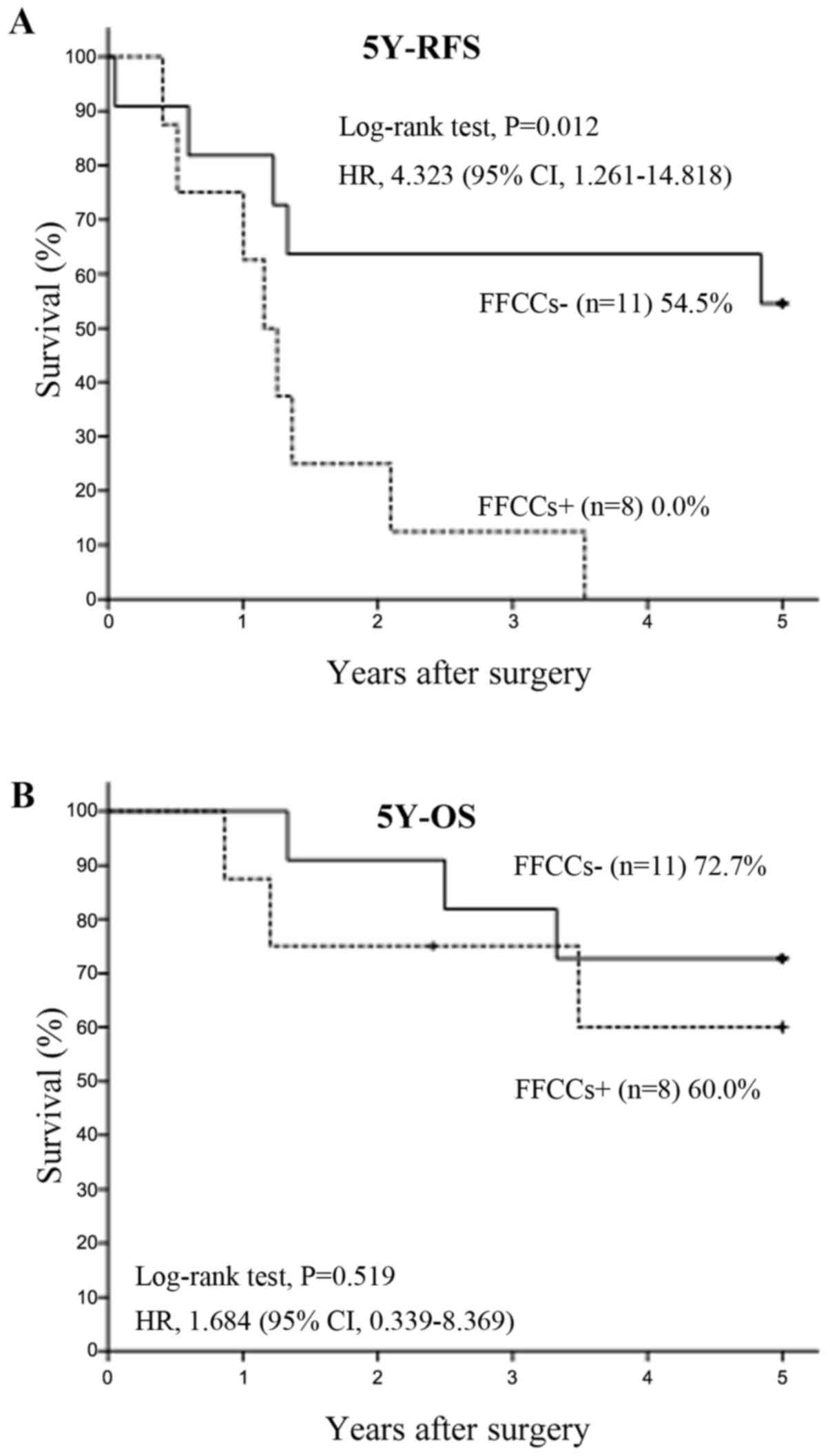Free‑floating cancer cells in lymph node sinuses of hilar lymph node‑positive patients with non‑small cell lung cancer
- Authors:
- Published online on: May 14, 2018 https://doi.org/10.3892/mmr.2018.9014
- Pages: 1081-1087
Metrics:
Total
Views: 0 (Spandidos Publications: | PMC Statistics:
)
Total PDF Downloads: 0 (Spandidos Publications: | PMC Statistics:
)
Abstract
Previous studies demonstrated that free‑floating cancer cells (FFCCs) in the lymph node sinuses were of prognostic significance for colorectal and gastric cancer. The present study investigated the clinical significance of detecting FFCCs using Fast Red staining for cytokeratin in stage I/II non‑small cell lung cancer (NSCLC) patients and hilar lymph node positive NSCLC patients who underwent curative resection. Between 2002 and 2011, a total of 164 patients (including 22 hilar lymph node positive patients) were investigated. Resected lymph nodes were stained for cytokeratin using an anti‑cytokeratin antibody. In order to achieve a clear distinction from coal dust, an anti‑cytokeratin antibody was labeled with a secondary antibody conjugated with alkaline phosphatase, which was detected by a reaction with Fast Red/naphthol that produced a red color. Patients were considered to be positive for FFCCs (FFCCs+) if one or more than one free‑floating cytokeratin‑positive cell was detected in the lymph node sinuses, which could not be detected by hematoxylin and eosin staining. Among all 164 patients, a significant difference was observed in 5‑year relapse‑free survival (5Y‑RFS) rates, with 76.9 and 33.3% being achieved by FFCCs‑ and FFCCs+ patients, respectively (P<0.001). Similarly, the 5‑year overall survival (5Y‑OS) rate was significantly lower in FFCCs+ patients, with 86.6% being achieved by FFCCs‑ and 65.8% by FFCCs+ patients, respectively (P=0.014). Among 22 hilar lymph node‑positive patients, a significant difference was also observed in 5Y‑RFS, with 53.8 and 0.0% being achieved by FFCCs‑ and FFCCs+ patients, respectively (P=0.006). The 5Y‑OS tended to be lower in FFCCs+ patients, with 69.2 and 53.3% being achieved by FFCCs‑ and FFCCs+ patients, respectively (P=0.463). The findings of the present study suggested the presence of FFCCs in stage I/II NSCLC patients was associated with a poor prognosis. In addition, FFCCs in hilar lymph node‑positive patients may potential be a useful marker in foreseeing the recurrence of cancer.














